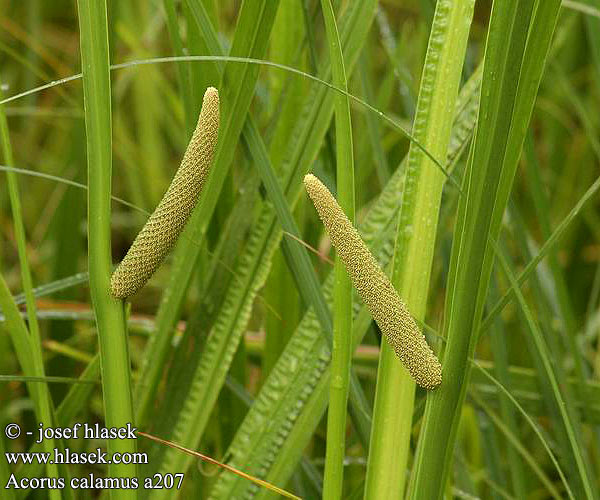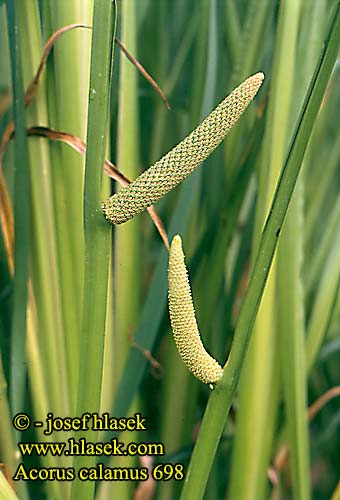Calamus
[size=75]From Wikipedia, the free encyclopedia [/size]
Calamus or Common Sweet Flag (Acorus calamus) is a plant from the Acoraceae family, Acorus genues. It is a tall perennial wetland monocot with scented leaves and rhizomes which have been used medicinally, for its odor, and as a psychotropic drug. It is known by a variety of names, including cinnamon sedge, flagroot, gladdon, myrtle flag, myrtle grass, myrtle sedge, sweet cane, sweet myrtle, sweet root, sweet rush, and sweet sedge. Probably indigenous to India, Acorus calamus is now found across Europe, in southern Russia, northern Asia Minor, southern Siberia, China, Japan, Burma, Sri Lanka, and northern USA.
The morphological distinction between the Acorus species is made by the number of prominent leaf veins. Acorus calamus has a single prominent midvein and then on both sides slightly raised secondary veins (with a diameter less than half the midvein) and many, fine tertiary veins. This makes it clearly distinct from Acorus americanus.
The leaves are between 0.7 and 1.7 cm wide, with average of 1 cm. The sympodial leaf of Acorus calamus is somewhat shorter than the vegetative leaves. The margin is curly-edged or undulate. The spadix, at the time of expansion, can reach a length between 4.9 and 8.9 cm (longer than A. americanus). The flowers are longer too, between 3 and 4 mm. Acorus calamus is infertile and shows an abortive ovary with a shriveled appearance.
Both triploid and tetraploid calamus contain asarone, but diploid does not contain any.
Calamus and products derived from calamus (such as its oil) were banned in 1968 as food additives and medicines by the United States Food and Drug Administration.

